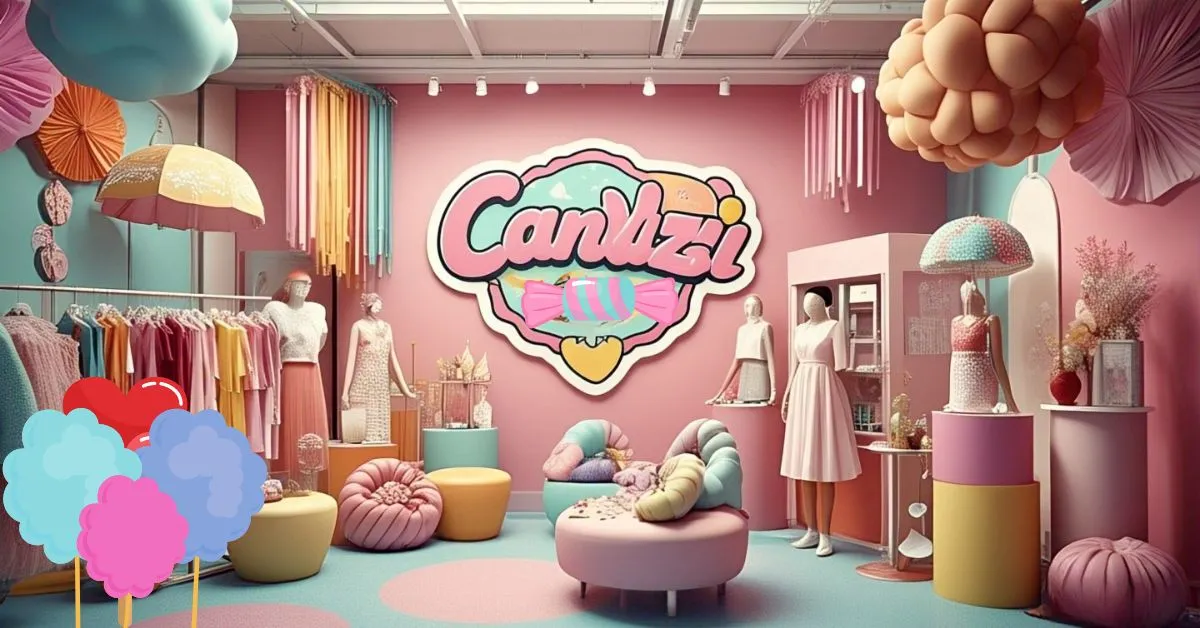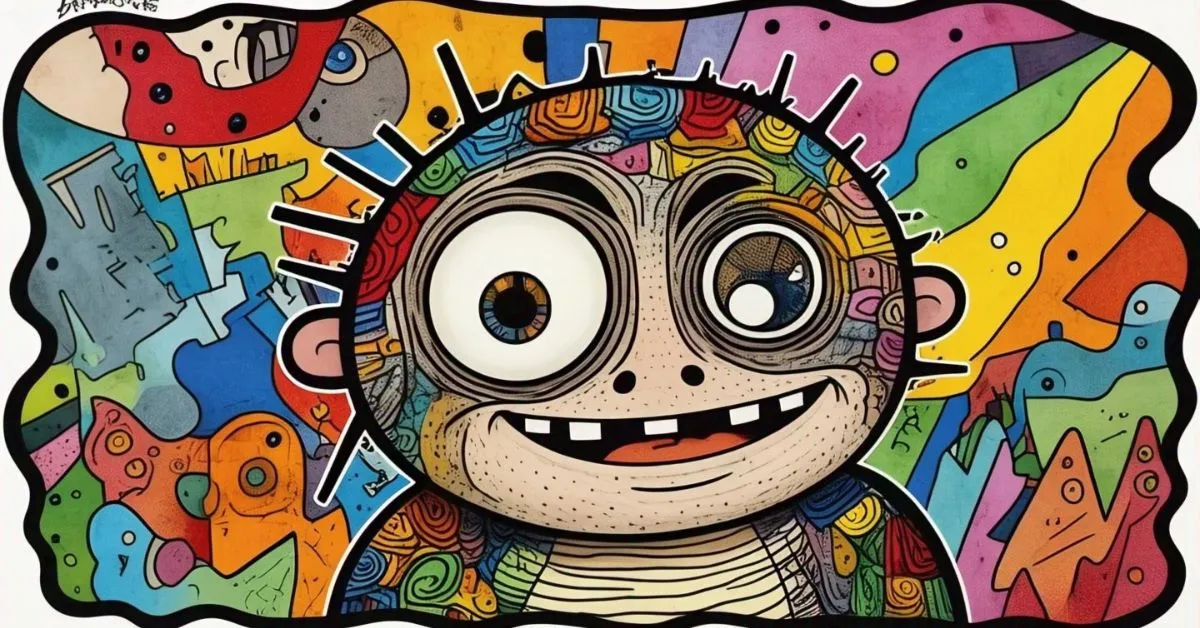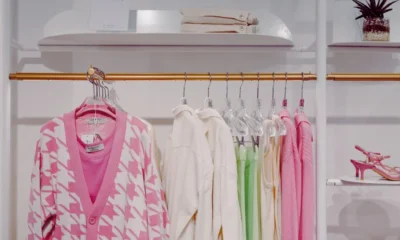GENERAL
Candizi: Where Color Meets Candy-Inspired Joy

Imagine stepping into a world filled with vibrant colors, sweet memories, and playful energy—that’s the feeling behind Candizi. It’s not just about candy; it’s about bringing that same joyful, nostalgic vibe into everything from fashion to events and even branding.
Inspired by the colors and textures of your favorite treats, this concept adds fun and creativity to everyday life in a way that feels fresh, lighthearted, and totally unforgettable.
Whether it’s in fashion, event design, branding, or lifestyle decor, the candycore aesthetic has seen a massive surge in popularity. It appeals not only to our love of color but also to the comfort and playfulness associated with sugary treats.
At the heart of this trend lies the lively energy of Candizi, a concept that offers both visual excitement and emotional warmth.
The Origin of a Sweetly Stylish Movement
Candizi isn’t just a name—it’s a movement built on the foundation of whimsy, sweetness, and color. Inspired by classic confections such as gummy bears, marshmallows, rock candy, and licorice, this concept fuses nostalgia with modern creativity.
It resonates with a wide audience, from millennials seeking vibrant aesthetics to children enjoying playful surroundings.
The roots of this aesthetic lie in pop culture, where candy-themed visuals have long made appearances in music videos, fashion runways, and even interior design.
From Katy Perry’s “California Gurls” to Willy Wonka’s magical world, sweet visuals spark emotional responses that go beyond mere style.
Core Elements That Define the Candizi Style
What makes Candizi stand out are its defining visual and textural elements. Think bubblegum pinks, pastel blues, cotton candy purples, and neon greens—colors that spark joy and instantly transport you to a cheerful, imaginary candy shop.
Textures also play a vital role. Glossy surfaces, jelly-like materials, and fluffy fabrics contribute to the multisensory impact of Candizi.
When used in fashion or decor, these textures invite touch and interaction, reinforcing the playful and immersive nature of the style.
Candizi in Event Design: Making Moments Magical
In event planning, especially for birthdays, baby showers, and themed parties, the Candizi aesthetic has become a go-to theme. Candy bars, color-coordinated balloons, oversized lollipop props, and pastel backdrops transform regular venues into dreamlike settings.
Event designers often lean into the sweetness of the theme to craft photo-worthy spaces that guests won’t forget.
Soft lighting, iridescent streamers, and sprinkle-inspired confetti are just a few of the tools used to create an environment that feels both festive and heartwarming.
From Streetwear to Haute Couture: Candizi in Fashion
Fashion has embraced the Candizi wave with open arms. Brands and influencers alike are reimagining sugary styles in their collections.
Puffy jackets in bubblegum hues, jelly sandals reminiscent of gummy textures, and accessories shaped like sweets reflect the aesthetic beautifully.
Haute couture has also flirted with candycore. Designers are turning to candy-wrapped inspirations for everything from fabric patterns to runway show themes.
This infusion of fun into fashion allows wearers to express joy and personality in bold, unapologetic ways.
Influence on Branding and Visual Identity
Modern branding thrives on capturing attention and creating emotional connections. Candizi-inspired visuals offer both. Brands that want to appear fun, accessible, and youthful often turn to this playful palette and iconography.
Think donut-shaped logos, sherbet gradients, and typography that looks like it was piped from frosting.
These design choices aren’t just about looking cute—they’re about strategic emotional engagement. When a customer associates a product with fond memories of sweets and celebration, they’re more likely to engage and return.
Interior Decor That Pops with Sweetness
Interior designers are also embracing the aesthetic, especially in spaces intended for children, cafés, and boutique shops.
Furniture shaped like bonbons, wallpaper splashed with vibrant dots, and fluffy pastel rugs contribute to a cheerful environment.
The use of Candizi styling in these spaces creates a sense of playful escapism. It breaks away from the cold minimalism of past trends, inviting color, coziness, and creativity into everyday environments.
Digital Expression and the Rise of Candycore Aesthetics
Social media platforms have fueled the rise of digital design trends, and Candizi has found its sweet spot among them. Instagram feeds, TikTok filters, and Pinterest boards brim with candy-themed visuals, DIY decor tips, and makeup looks that echo the style.
In digital art, this aesthetic is brought to life through bold gradients, glossy icons, and interactive experiences that feel like tapping through a digital candy store.
Creators use this visual language to attract younger audiences and deliver content that feels both fun and fresh.
Celebrity Endorsements and Pop Culture Integration
Candizi doesn’t live in a vacuum—it’s been embraced by celebrities and artists. Pop stars like Lizzo, Doja Cat, and Billie Eilish have all leaned into candycore visuals for their music videos, fashion choices, and public appearances.
This integration into mainstream media has elevated the style from niche to notable. Every time a celebrity steps out in cotton candy colors or a stage is decked out like a candy shop, it reinforces the cultural relevance of this vibrant concept.
Psychology of Color and the Emotional Power of Sweet Visuals
There’s actual psychology behind why Candizi is so appealing. Pastel shades are known to soothe anxiety and promote feelings of joy.
Bright colors like pink and yellow stimulate energy and optimism, making them perfect for social settings or personal expression.
When combined with candy imagery, these colors tap into our brain’s reward system. Memories of childhood treats, birthday parties, and holidays get triggered, resulting in a dopamine boost that enhances mood and perception.
Why Candizi Works Across Generations
Though rooted in childlike imagery, Candizi resonates with all age groups. Children are drawn to its playful visuals, teens use it for self-expression, and adults see it as a nostalgic throwback with a modern twist.
This cross-generational appeal makes it an ideal aesthetic for brands and creators looking to bridge age gaps. It speaks to the timeless love of sweetness, joy, and color.
Practical Ways to Bring Candizi Into Your Life
You don’t need a professional designer to embrace the aesthetic. Start small with pastel stationery, candy-colored phone cases, or a sprinkle-themed throw pillow. Add a jelly-textured accessory to your outfit or try a bubblegum-inspired nail polish.
Digital touches count too—customize your phone screen with a Candizi wallpaper, or style your Instagram highlights with candycore icons.
These small changes bring the playfulness of the aesthetic into everyday life without a full overhaul.
Candizi in Food and Culinary Presentation
Beyond visuals and fashion, the concept has even influenced the culinary world. Think pastel macarons, glittery donuts, unicorn milkshakes, and rainbow cakes.
These desserts aren’t just tasty—they’re designed to be photographed and shared.
Bakeries and cafes have embraced Candizi to craft signature treats that reflect the trend. Presentation becomes just as important as flavor, and the result is a multisensory experience that delights customers.
Sustainability and Conscious Design in the Candycore World
As with any trend, sustainability matters. Designers and brands embracing the Candizi aesthetic are increasingly seeking eco-friendly materials, non-toxic dyes, and ethically sourced goods.
This conscious shift ensures that the sweet visuals don’t come with a bitter cost.
Some creators even upcycle or repurpose existing materials to craft candy-themed items, merging aesthetics with environmental responsibility. It’s a powerful reminder that style and sustainability can coexist beautifully.
Conclusion: A Sweet Future for a Colorful Concept
Candizi has grown from a playful idea into a versatile design language that shapes how we express, decorate, and connect.
From pastel palettes and sugary textures to emotional resonance and cultural impact, it captures something uniquely joyful in the modern experience.
Whether you’re planning a party, launching a brand, or simply seeking joy through color, Candizi offers a visually rich and emotionally uplifting approach.
As this colorful concept continues to evolve, one thing is certain: the future looks sweet, vibrant, and full of possibility.
FAQs:
What is Candizi?
Candizi is a colorful concept inspired by candy visuals, used in fashion, decor, and design to spark joy.
Is Candizi just for kids?
Not at all! Adults love it too for its nostalgic charm and fun, expressive style.
Can I use Candizi in home decor?
Yes! Add pastel furniture, sprinkle-themed art, or candy-colored rugs to bring the look home.
Why is Candizi so popular?
It combines emotional appeal with bold design, making it perfect for social media, self-expression, and creative branding.
GENERAL
Who Is Ash Trevino? The Rise, Life, and Controversy

Ash Trevino (born Ashley Trevino on January 17, 1989) is a Texas-born content creator and social media personality who skyrocketed to fame on TikTok under the username @queenb_ash23. Known for docuseries-style videos chronicling her personal life—especially her unconventional relationships and parenting—she has amassed a fiercely loyal audience as well as intense criticism, making her one of the most polarizing figures on social media.
Early Life & Background
Born and raised in Corpus Christi, Texas, Ash Trevino grew up in a tight-knit Mexican-American family. While details about her childhood and educational background are sparse, she credits her grandmother for instilling cultural pride and resilience.
Becoming a Social Media Star
- TikTok Debut & Growth
Trevino joined TikTok in April 2023 and quickly found traction by sharing unfiltered videos—shopping hauls, selfies, and heavily personal glimpses into her home life. By 2025, she had over 230,000 to nearly 700,000 followers (depending on source), earning her a significant platform. - Livestreams & Monetization
Trevino’s livestreams became controversial yet lucrative. She once reported earning up to $12,000 in just two hours through viewer donations. - Brand Extensions
Beyond TikTok, she authored a memoir titled A Broken Hallelujah: Overcome Shame by Showing Up…, and dabbles in brand collaborations, merchandise, and potential tech investments.
Family & Motherhood
A mother to two teenage daughters—Hailey and Evie—Trevino faces scrutiny for how she balances her social media persona with parenting. Critics allege her home lacks basic provisions and that her children face social isolation due to their mother’s notoriety.
Her daughters, who also appear on TikTok, are said to be primarily raised by their grandmother. Trevino insists they’re well cared for and that public criticism over material possessions shouldn’t dictate her right to parent.
Controversial Romance
Trevino has defined herself as an “inmate hopper”—a term used to describe her pattern of courting, dating, and sometimes marrying men in prison.
- She introduced one incarcerated husband to her daughters as “dad.”
- Reports suggest she’s been involved with over 20 inmates, including those convicted of violent crimes.
- In 2025, she was romantically linked with a 19-year-old named Santos, raising eyebrows about ethical boundaries and potential drama within her family spheres.
Public Incidents & Legal Scrutiny
Trevino’s public life is punctuated by high-profile incidents:
- San Antonio Disturbance (Jan 2025): A night at North Star Mall and River Walk ended with arrests—including her companion Josiah Kane De La Fuente—for unlawful weapons possession. Trevino reportedly posted bond for them. Videos and social media commentary labeled her the “craziest inmate hopper.”
- Repeated CPS Reports: Allegations of neglect and emotional abuse were filed, focusing on her parenting. Trevino maintains her custody and asserts critics misconstrue her lifestyle.
Controversies & Criticisms
| Area | Criticism |
| Parenting | Use of her daughters for content, neglect of material needs, CPS involvement |
| Romantic Choices | Relationships with incarcerated men: ethical and safety concerns |
| Public Drama | Legal incidents, public spats, divisive persona |
| Exploitation of Personal Life | Critics cite her book and livestreams as monetizing family trauma |
Many argue Trevino manipulates public perception by controlling the narrative—embracing her label as the “internet’s worst mom” to energize and monetize her own notoriety.
Her Response & Public Image
Trevino is unapologetic. In TikTok videos, she’s stated:
“One thing I don’t need from any of y’all haters is acceptance… the more y’all hate, the more I’m moving up.”
She emphasizes that viewers don’t truly know her maternal priorities or home environment and insists her critics are shallow.
Cultural Identity & Personal Style
Trevino displays pride in her Mexican-American roots, often celebrating community and cultural heritage. She’s known for her casual lifestyle—hiking, painting, eating Moon Pies—and her direct, unapologetic conversational style.
Financial Trajectory & Business Moves
- Income Streams: TikTok and Instagram monetization, book sales, brand deals, and merch.
- Estimates of net worth run from $100,000 to $2.5 million—dependent on her livestream success.
Her path reflects how modern internet personalities can build businesses centered on personal drama and bold authenticity.
What’s Next?
Trevino has floated plans for a podcast, possible reality TV project, and launching a charity for youth in education. While unconfirmed, these initiatives may signal a strategic shift to broaden her brand.
She continues frequent appearances in San Antonio—shopping with fellow influencers—or posting confrontational content, keeping her firmly in the public eye.
Conclusion
Ash Trevino’s saga encapsulates the complexities of modern influencer culture. She’s unapologetically herself—provocative, raw, and unfiltered. Supporters see empowerment in her transparency; detractors see a troubling exploitation of children, relationships, and real-world drama for online validation.
Regardless of perspective, Trevino’s feasts of controversy and authentic storytelling show how social media fame can blur the lines between personal choice and public spectacle.
Her story invites important questions: can someone who courts controversy still be seen as a responsible parent? Can fame justify shock content? As Ash Trevino charts what’s next, one thing is clear—her ability to spark heated reactions is her most enduring superpower.
FAQs:
Who is Ash Trevino?
Ash Trevino is a TikTok content creator known for sharing her personal life, relationships, and motherhood stories online.
Why is Ash Trevino controversial?
She gained criticism for dating inmates, sharing intimate family details publicly, and alleged parenting concerns.
What is Ash Trevino’s TikTok handle?
Her popular TikTok handle is @queenb_ash23.
Does Ash Trevino have children?
Yes, she has two daughters, Hailey and Evie, who sometimes appear in her videos.
Is Ash Trevino an author?
Yes, she wrote a memoir titled A Broken Hallelujah, where she shares her personal healing journey.
GENERAL
Caricatronchi: Art, Satire, and Cultural Commentary

In the rapidly shifting world of contemporary art and culture, new forms of expression continue to emerge and challenge traditional boundaries. One of the most unique and conversation-sparking movements to arise is a genre that blends satire, exaggerated visuals, and cultural commentary: Caricatronchi. With its roots in both classical caricature and modern digital storytelling, this style reimagines how we look at ourselves and the society we inhabit.
At its core, this movement is more than just funny faces or distorted shapes. It’s a cultural critique wrapped in laughter, an artistic language that uses exaggeration to uncover truth. While the aesthetic may appear playful or absurd on the surface, it often delivers sharp insights about identity, power, and the absurdities of modern life.
This article explores the historical roots, stylistic features, cultural relevance, and future potential of this fascinating approach to art and expression.
The Origins: A Tradition of Satire with a New Voice
To understand where this style comes from, it’s essential to look back at the long-standing tradition of caricature. Artists like Honoré Daumier and James Gillray used visual exaggeration to comment on politics, social norms, and power structures. Their work functioned both as entertainment and critique, often giving the public a voice in challenging times.
Fast-forward to the 21st century, and artists are now using digital tools to expand that legacy. The digital realm offers a new canvas for this exaggerated expression, blending the past with the present.
Graphic tablets, animation software, and social media allow for rapid creation and even faster distribution. Within this ecosystem, a form like Caricatronchi found its footing, using these tools to create a distinct blend of caricature, comics, and visual journalism.
Artists in this movement often position themselves as cultural commentators. Their work might reflect issues such as consumerism, climate change, or political hypocrisy. Yet, even the most biting critique comes wrapped in humor or absurdity, which makes it both approachable and impactful.
Visual Style
The hallmark of this style lies in its visual vocabulary. Exaggerated proportions, contorted faces, and surreal environments are all common tools used to amplify the emotional message of the artwork. Eyes may bulge with anxiety; limbs might stretch unnaturally to emphasize imbalance or excess; colors are often jarring and bold.
What sets this aesthetic apart from traditional caricature is its narrative quality. Each piece tells a story—sometimes in a single frame, sometimes as part of a longer sequence. Rather than simply ridiculing, the style creates a fictionalized mirror of reality that invites reflection.
The characters, though fantastical, embody very real human experiences: stress, vanity, confusion, joy, and despair.
Often, the use of mixed media or hybrid styles (combining photography, digital painting, and typography) further enhances the impact.
The result is a layered and multifaceted approach that captures the chaos and complexity of the modern world in a way few other styles can.
Cultural Commentary in Colorful Form
One of the most compelling aspects of Caricatronchi is its role as a cultural barometer. It often takes aim at the absurdities of contemporary life—things like influencer culture, corporate jargon, or political theater—and stretches them to their logical extremes. The humor is not just in what’s being shown, but how it’s shown.
In one instance, a series might explore the relentless chase for social media validation, depicting characters whose heads have been replaced with like buttons or whose limbs have become smartphone chargers.
In another, the culture of self-optimization might be portrayed through grotesque avatars locked in endless loops of productivity hacks.
The use of irony and hyperbole makes complex topics more digestible. Viewers may laugh at the absurdity, only to realize later how closely the themes reflect their own lives.
This blend of entertainment and insight is what gives the style its lasting appeal. It entertains, but it also provokes thought.
A Global Audience in a Digital Era
Thanks to social media and online galleries, the global reach of this movement has grown substantially in recent years. Artists from different cultural backgrounds bring their own local nuances to the work, making it an ever-expanding conversation.
What began as a regional curiosity has evolved into a worldwide community of creators and fans.
The accessibility of tools has also contributed to the democratization of the form. Aspiring artists can start creating with a smartphone and a stylus, and share their work instantly.
Hashtags and online challenges help bring visibility, and digital collaborations often emerge between artists in different parts of the world.
Interestingly, this widespread appeal hasn’t diluted the message. On the contrary, the global nature of modern absurdity—climate denial, algorithmic bias, political extremism—makes the themes universally resonant. The work continues to function both as a critique of local culture and a commentary on global issues.
The Emotional Layer: Humor with a Purpose
While much of the appeal lies in visual wit and sharp commentary, there’s also an emotional core that shouldn’t be overlooked. The exaggerated features and scenarios are often metaphors for internal struggles. Anxiety, imposter syndrome, body image issues—all are themes that frequently surface.
By presenting these struggles in a humorous or fantastical form, the art creates a space for empathy. Viewers may see a version of their own stress in a character whose eyes are spiraling out of their head.
Or they may recognize the pressure to conform in a figure being squashed into a corporate suit two sizes too small.
This emotional resonance adds depth and ensures the work is more than just surface-level satire. It offers a moment of recognition—a way to laugh at, and perhaps even heal from, the pressures of contemporary life.
Critical Reception and Academic Interest
Though still relatively niche, the movement has begun to draw attention from critics, curators, and scholars. Exhibitions have popped up in major art capitals like Berlin, New York, and Tokyo, often paired with discussion panels and workshops.
Academic papers explore its use of satire as a coping mechanism in the digital age or its subversive strategies against capitalist realism.
In this way, Caricatronchi is carving out a legitimate place for itself in the contemporary art world. It blurs the lines between high and low culture, fine art and internet meme, and in doing so, it raises questions about what art is supposed to do.
Must it always be beautiful? Or can it be grotesque, funny, and still deeply meaningful?
It’s precisely this challenge to the norm that makes the movement exciting. It demands new criteria for evaluation—ones that consider audience impact, social commentary, and emotional resonance alongside technical skill.
Future Potential: Where Does It Go From Here?
The future of this genre seems as unpredictable and inventive as the artwork itself. As new technologies like AI-generated art and virtual reality become more mainstream, we can expect to see these tools integrated into the practice.
Imagine immersive installations where visitors can walk through a three-dimensional satirical landscape, or AI characters that adapt their exaggerations based on viewer interaction.
Furthermore, as societal challenges evolve—be it through economic shifts, climate crises, or technological upheaval—there will always be fresh material for satire and storytelling.
The need for voices that can critique, amuse, and enlighten will remain strong.
There’s also potential for crossover with other disciplines. Theater, fashion and even architecture could adopt the whimsical distortions and thematic depth characteristic of this style.
Already, we see stage performances and clothing lines inspired by the exaggerated aesthetic, pushing its influence beyond galleries and into the cultural mainstream.
Conclusion
In a world often dominated by curated perfection and algorithmic predictability, this creative movement offers something refreshingly honest. Through exaggerated visuals, narrative depth, and biting humor, it invites us to look at ourselves and our world with fresh eyes.
Whether it’s mocking the absurdity of tech culture, portraying the anxieties of daily life, or simply making people laugh, Caricatronchi serves as a vital tool for both critique and connection. It reminds us that sometimes, the best way to understand something serious is to laugh at it first.
As more artists adopt this lens and more audiences resonate with its messages, it’s clear that this isn’t just a passing trend. It’s a growing force in contemporary art and culture—one that reflects our reality with all its beauty, madness, and meaning.
FAQs:
Is Caricatronchi a form of traditional caricature?
Not exactly. While it shares roots with traditional caricature, it combines narrative storytelling, satire, and mixed media to reflect modern life more deeply.
Can anyone create this style of art?
Yes! The style thrives on creativity and exaggeration. With basic tools and a unique perspective, anyone can start creating.
Does Caricatronchi always involve humor?
Humor is a key element, but it’s often used to highlight deeper emotional or social truths. It blends fun with insight.
Where can I see examples of this style?
Many artists share their work on social media platforms, online galleries, and during special exhibitions in contemporary art museums.
Is this style only digital?
No. While it’s popular in digital formats, some artists work with physical media like ink, paint, and collage, giving the movement even broader creative scope.
GENERAL
How to I Register for eGrams: A Comprehensive Guide

Many government and organizational services have moved online, offering streamlined methods to access important information and administrative tools. One such platform is eGrams—a web-based system designed to facilitate and organize various administrative processes efficiently.
Whether you’re a citizen, contractor, or service provider, registering on eGrams may be a necessary step for accessing critical features. This article explains what eGrams is, why registration matters, and provides a detailed, step-by-step guide how to i register for eGrams.
Understanding the eGrams System
Before diving into the registration process, it is important to grasp what eGrams is and its purpose. While the specific functions of eGrams may vary depending on the region or agency administering it, the system generally aims to:
- Digitize Administrative Processes: eGrams is designed to reduce paperwork by moving various administrative tasks online.
- Enhance Transparency: The platform often provides detailed tracking and monitoring of services or transactions.
- Improve Efficiency: By centralizing data and processes, the system streamlines workflows for both administrators and users.
- Ensure Secure Communication: eGrams typically employs secure login and verification methods to protect sensitive data.
For example, if you are a contractor or a local government employee, registering on eGrams might be necessary for accessing permits, tracking submissions, or managing payment records. Understanding these aspects can help users appreciate why investing time in registering is worthwhile.
Why Register for eGrams?
There are several reasons why registration on the eGrams system is important:
- Access to Comprehensive Services: Once registered, users can access a range of services that might include application submissions, document tracking, or grievance redressal.
- Timely Updates: Registered users often receive timely notifications and updates regarding the status of their applications or submissions.
- Enhanced Record Keeping: The system helps users maintain an organized digital record of their transactions and interactions.
- Security and Privacy: With strict login protocols, eGrams ensures that personal and professional data is safeguarded from unauthorized access.
- User Convenience: With an eGrams account, you can complete tasks at your convenience without needing to visit an office, making the process quicker and reducing waiting times.
Understanding these benefits can motivate prospective users to complete the registration process and enjoy the full spectrum of eGrams’ functionalities.
READ MORE: @ESPRESSOBLOGS.COM
Prerequisites and Preparation
Before you begin registering for eGrams, there are a few essential preparations to ensure a smooth process:
- Internet Connection and Device: You will need a reliable internet connection and a compatible device (computer, tablet, or smartphone) to access the eGrams portal.
- Personal and Professional Information: Keep handy any personal details such as your full name, identification numbers (if applicable), contact details, and possibly additional documents required for verification.
- Email Address and Mobile Number: An active email address and a mobile phone number are typically required for account verification and receiving confirmation notifications.
- Create a Strong Password: Think of a secure, unique password that meets any stated security requirements (often including a combination of letters, numbers, and special characters).
- Browser Compatibility: For best performance, ensure your browser is up-to-date. Some systems perform best with certain browsers, so check for any recommended settings or compatibility issues.
- Review any Documentation: If the eGrams website provides a user manual, FAQ, or guidelines for new users, taking a moment to review these resources can prevent issues during the registration process.
Taking the time to gather these details and prepare your device can help you move through the process more confidently and efficiently.
Step-by-Step Guide to Registering for eGrams
Below is a detailed walkthrough of the registration process on the eGrams portal:
1. Visit the Official eGrams Website
- Locate the Portal: Open your preferred web browser and enter the official URL for the eGrams portal. If you are not sure of the URL, check with the relevant official agency or institution that is administering the system.
- Homepage Overview: Once the website loads, you should see a homepage that outlines the features of the platform and may include a “Register” or “Sign Up” button.
2. Begin the Registration Process
- Click the “Register” Button: Look for a prominent “Register,” “Sign Up,” or “Create Account” link. This button is typically located at the top right-hand corner of the homepage.
- Choose Your Account Type: Some platforms offer multiple account types (for example, individual, organizational, or contractor accounts). Select the type that best matches your status or needs.
3. Complete the Registration Form
- Fill in Personal Information: You will be prompted to enter your personal details. This often includes your full name, contact number, email address, and sometimes additional identifiers such as a government-issued ID number.
- Provide Additional Details: Depending on the type of registration, you might need to enter professional or organizational details. This could include company name, business registration details, or other relevant information.
- Agree to Terms and Conditions: Most eGrams portals will include a checkbox for accepting the terms and conditions. Read through these carefully, and if you agree, check the box and continue.
4. Verify Your Email Address
- Confirmation Email: After submitting your registration form, the system will send a confirmation email to the address you provided. This is an essential step in verifying your identity.
- Click the Verification Link: Open the email and click on the verification link. This usually directs you back to the eGrams portal and confirms that your email is active and correctly associated with your account.
5. Set Up Login Credentials
- Create a Secure Password: You will be prompted to create a strong password for your account. Ensure it is unique, combines letters, numbers, and symbols, and avoid using easily guessable information.
- Multi-Factor Authentication: Some systems offer or require additional security measures such as multi-factor authentication (MFA). Follow the on-screen instructions to set this up, which might include linking your mobile device for SMS verification or using an authenticator app.
6. Complete Additional Verification Steps (if applicable)
- Document Upload: Depending on the requirements of the system, you may need to upload scanned copies of specific documents (for example, proof of identity, business registration certificates, etc.). Follow the instructions provided to upload these securely.
- Review Your Information: Before finalizing your registration, review all the entered information. Ensure that there are no errors, as incorrect data could delay the verification process.
- Submit Registration: Once you are confident that all information is correct, submit your registration. The system may display a confirmation message acknowledging receipt of your registration details.
7. Await Final Approval and Access Your Account
- Processing Time: Some systems may require administrative approval before your account is fully activated. In such cases, you might receive a notification once your application has been reviewed.
- Access Your Dashboard: Once approved, log in using your registered email and password to access your personalized dashboard. From there, you can begin using the platform’s features, such as submitting applications or viewing notifications.
Troubleshooting Common Registration Issues
While the registration process is designed to be straightforward, users occasionally encounter challenges. Here are some common issues and their solutions:
Issue 1: Difficulty Accessing the Website
- Check Your Internet Connection: Ensure you have a stable internet connection. If not, try resetting your router or switching networks.
- Browser Compatibility: If the website isn’t loading properly, try using a different browser or updating your current one.
- Clear Cache and Cookies: Sometimes, clearing your browser cache and cookies can resolve loading issues.
Issue 2: Problems with Email Verification
- Spam or Junk Folder: If you haven’t received the verification email, check your spam or junk folder.
- Incorrect Email Entry: Double-check that you have entered your email address correctly. If there’s a typo, you may need to restart the registration process.
- Resend Verification Link: Most platforms offer a “Resend Link” option if the initial email is not received within a few minutes.
Issue 3: Error Messages During Form Submission
- Mandatory Fields: Ensure that all required fields are filled out before submitting the form.
- Formatting Issues: Some fields may require a specific format, such as a date of birth or phone number. Make sure you follow the format guidelines provided.
- Document Upload Issues: If you’re having trouble uploading documents, verify that the file format and size meet the platform’s requirements.
Issue 4: Delays in Account Approval
- Patience and Contact: If you have submitted all the required information and completed the verification steps, but your account remains unapproved, wait a reasonable period before contacting support.
- Contact Support: Look for a “Contact Us” or “Help” section on the eGrams website. Provide details of your registration attempt and ask for assistance.
Best Practices for a Smooth Registration Experience
To further enhance your registration experience, consider the following best practices:
- Double-Check Information: Always review your entries before submission to avoid delays due to errors.
- Keep Digital Copies: Maintain digital copies of any documents you upload. This can be useful for future reference or if you need to re-upload files.
- Use a Reliable Email Provider: Ensure that the email account you use is active and monitored regularly. This is crucial for receiving verification emails and important notifications.
- Stay Informed: Check for any updates or maintenance notifications on the eGrams website. Systems occasionally undergo updates, and being informed can help you plan your registration accordingly.
- Save Registration Screenshots: In case of any discrepancies or issues, screenshots of your submission process can be valuable evidence when contacting customer support.
- Follow Security Recommendations: Abide by best security practices such as using unique passwords and enabling multi-factor authentication. These measures protect your account and personal data from unauthorized access.
The Role of Customer Support and Resources
In many cases, even with a detailed guide, challenges may still arise. Most eGrams systems provide robust customer support and additional resources that can assist new registrants:
- Online Help Centers: Look for an FAQ or knowledge base on the eGrams portal that addresses common questions and troubleshooting tips.
- Live Chat and Helplines: If available, using a live chat function or calling the helpline can help resolve issues quickly.
- User Forums and Communities: Sometimes, other users share experiences and solutions in online forums. These communities can be an excellent resource for tips and troubleshooting advice.
- Official Documentation: Always refer to any official user guides or documentation provided on the site. These guides are tailored to the specific functionalities and requirements of the platform.
Utilizing these resources not only smooths out the registration process but also ensures that you remain informed about any subsequent updates or changes to the system.
Final Thoughts
Registering for eGrams is an essential step for those needing access to a variety of administrative and service-related functions in today’s digital environment. By understanding the purpose of eGrams, preparing all the necessary information ahead of time, and carefully following the step-by-step registration process outlined above, you can navigate the system with confidence and ease.
While the registration process is designed to be user-friendly, it is also important to be prepared for any potential hiccups. Following best practices, keeping track of documentation, and knowing where to turn for help can prevent frustration and ensure your application is processed promptly.
In our increasingly digital world, mastering online platforms like eGrams not only saves time but also enhances your ability to access the services and information that matter most to you.
As you register, remember that security is as important as convenience. Always safeguard your login credentials and remain vigilant about any communications that require additional verification.
This proactive approach helps create a secure digital footprint while ensuring that your interactions with the eGrams system remain both efficient and effective.
By empowering yourself with knowledge and taking a methodical approach to registration, you join a growing community of users who have embraced digital solutions to enhance transparency, security, and convenience in managing critical administrative tasks.
Whether you are new to digital registration systems or looking for ways to streamline your administrative processes further, the steps and best practices discussed here can serve as a reliable roadmap.

 ENTERTAINMENT1 month ago
ENTERTAINMENT1 month agoswatapp.me المانجا: The Ultimate Arabic Manga Experience

 GENERAL1 month ago
GENERAL1 month agoRub Ranking Exposed: The Truth You Need to Know

 BUSINESS2 months ago
BUSINESS2 months agoScoutly: Amazon FBA Scanning App for Sellers

 TECHNOLOGY2 months ago
TECHNOLOGY2 months agoNamsoccgen: Test Credit Card Number Generators

 GENERAL2 months ago
GENERAL2 months agoNo More Cling: How to Get Rid of Static on Clothes Fast and Safely

 TECHNOLOGY1 month ago
TECHNOLOGY1 month agoH644L2: A Mystery Model Generating Buzz in the Tech World

 GENERAL2 months ago
GENERAL2 months agoHigh Rocking Chairs: The Best Buying Guide for Tall and Comfortable Seating

 GENERAL4 weeks ago
GENERAL4 weeks agoHow to I Register for eGrams: A Comprehensive Guide
















